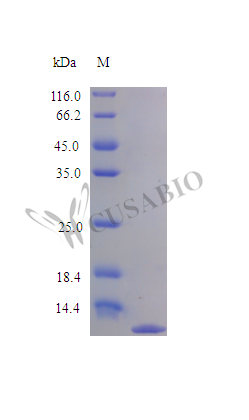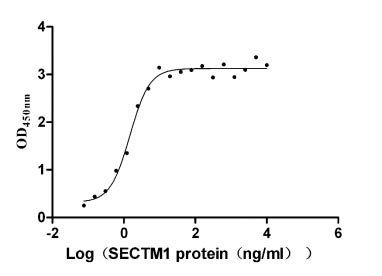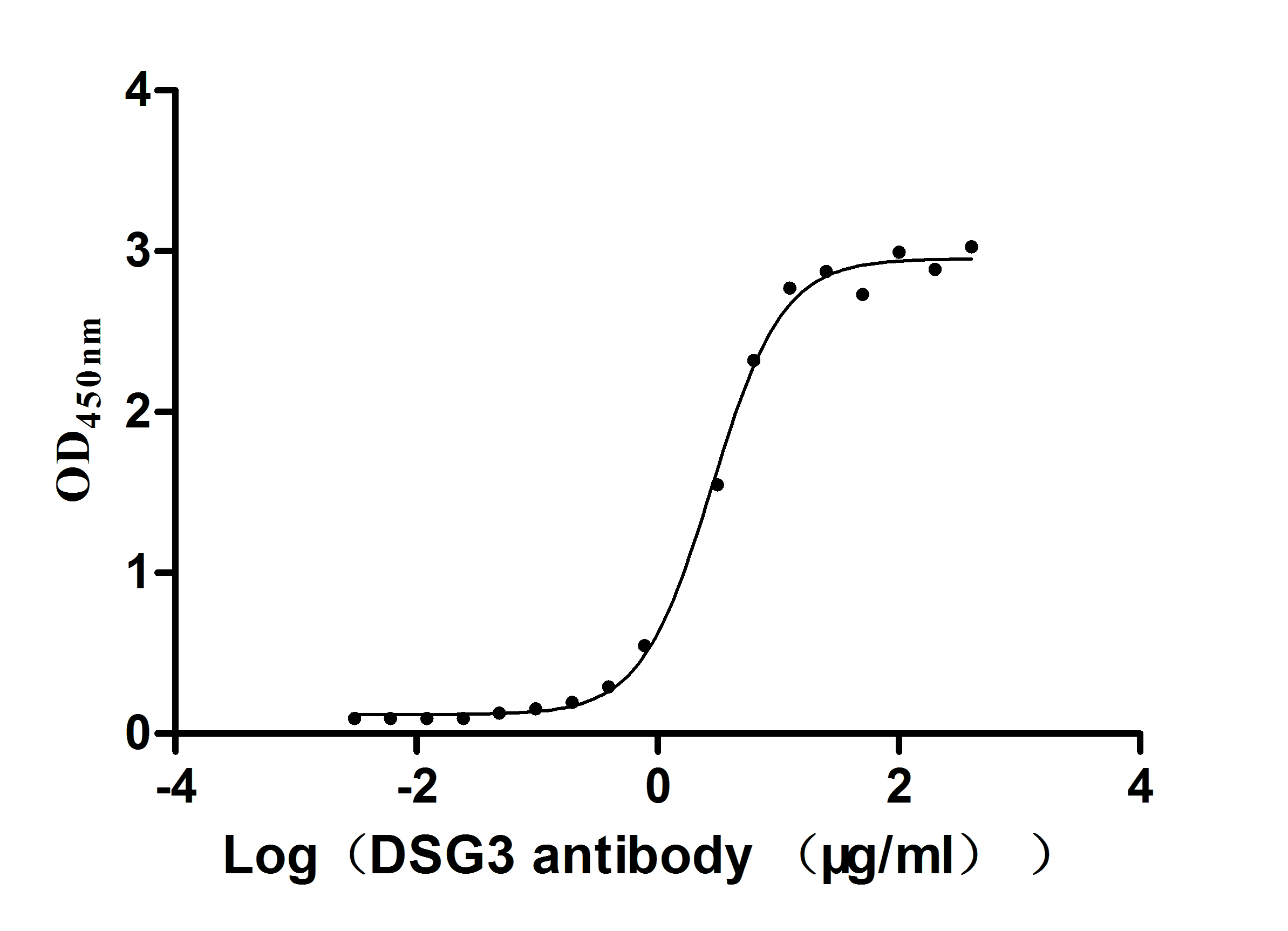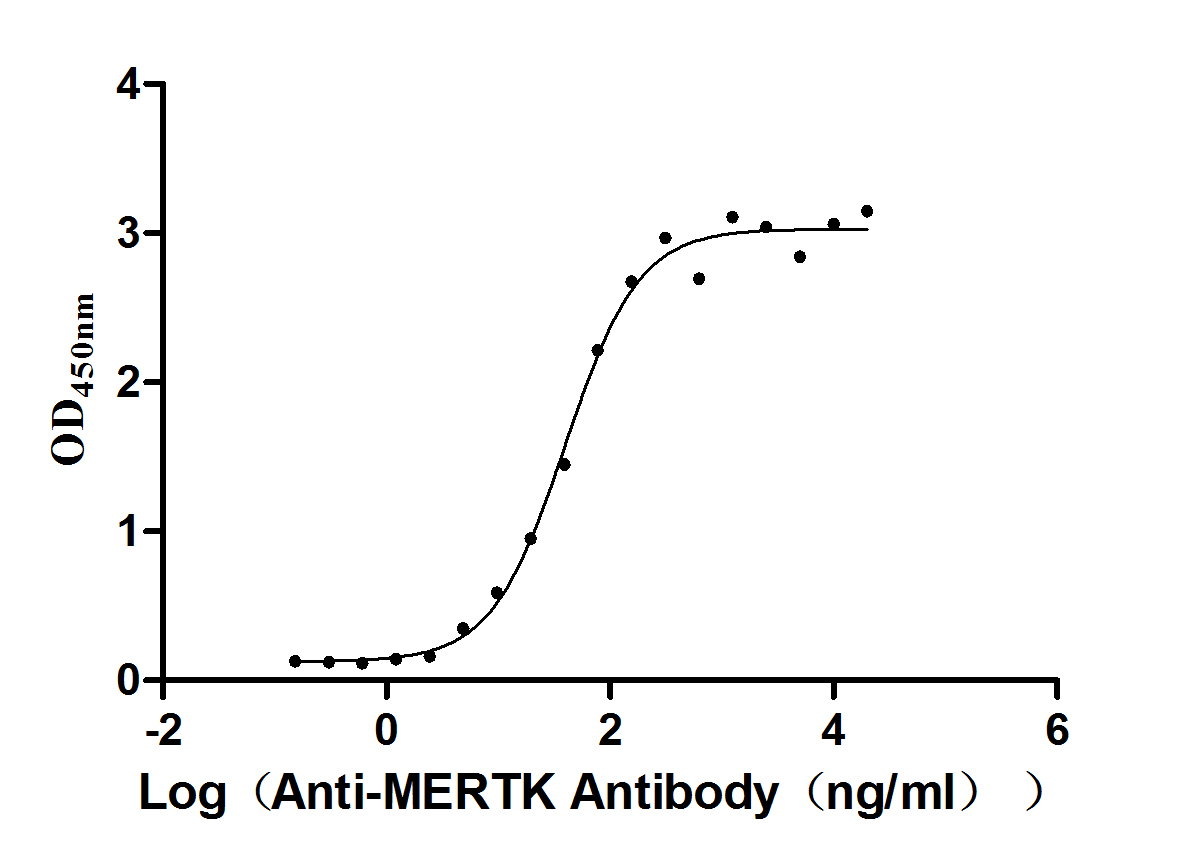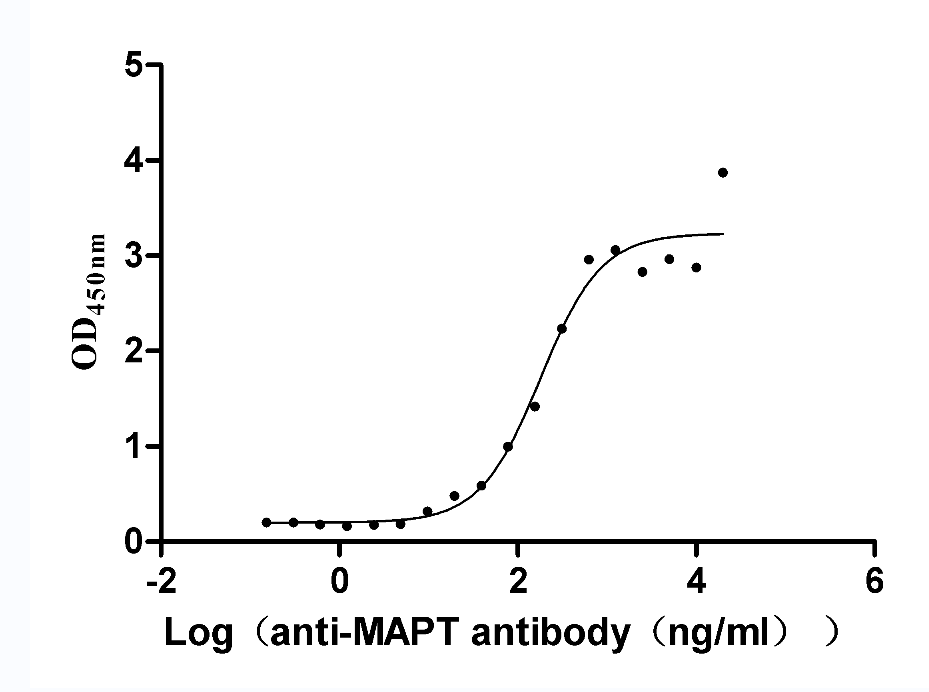Recombinant Rat C-C motif chemokine 3 protein (Ccl3)
In Stock-
中文名稱:Recombinant Rat C-C motif chemokine 3 protein(Ccl3) (Active)
-
品名簡稱:Recombinant Rat Mip1a protein (Active)
-
貨號:CSB-AP001521RA
-
說明書:
-
規格:¥852
-
圖片:
-
其他:
產品詳情
-
純度:>98% as determined by SDS-PAGE.
-
內毒素:Less than 1.0 EU/μg as determined by LAL method.
-
生物活性:Fully biologically active when compared to standard. The biological activity determined by a chemoattract bioassay using human blood monocytes is in a concentration range of 10-100 ng/ml.
-
基因名:
-
Uniprot No.:
-
別名:Ccl3; Mip1a; Scya3; C-C motif chemokine 3; Macrophage inflammatory protein 1-alpha; MIP-1-alpha; Small-inducible cytokine A3
-
種屬:Rattus norvegicus (Rat)
-
蛋白長度:Full Length of Mature Protein
-
來源:E.Coli
-
分子量:7.9 kDa
-
表達區域:24-92aa
-
氨基酸序列APYGADTPTA CCFSYGRQIP RKFIADYFET SSLCSQPGVI FLTKRNRQIC ADPKETWVQE YITELELNA
-
蛋白標簽:Tag-Free
-
產品提供形式:Liquid or Lyophilized powder
-
緩沖液:Lyophilized from a 0.2 μm filtered concentrated solution in 30 % Acetonitrile and 0.1 % TFA.
-
儲存條件:Store at -20°C/-80°C upon receipt, aliquoting is necessary for mutiple use. Avoid repeated freeze-thaw cycles.
-
保質期:The shelf life is related to many factors, storage state, buffer ingredients, storage temperature and the stability of the protein itself.
Generally, the shelf life of liquid form is 6 months at -20°C/-80°C. The shelf life of lyophilized form is 12 months at -20°C/-80°C. -
貨期:5-10 business days
-
Datasheet & COA:Please contact us to get it.
相關產品
靶點詳情
-
功能:Monokine with inflammatory and chemokinetic properties. Has chemotactic activity for monocytes, neutrophils, eosinophils, basophils, and lymphocytes. Required for lung TNF-alpha production, neutrophil recruitment and subsequent lung injury and may function as an autocrine mediator for the macrophage production of TNF-alpha which in turn up-regulates vascular adhesion molecules required for neutrophil influx. This protein binds heparin.
-
基因功能參考文獻:
- The important chemokine macrophage inflammatory protein1alpha increases inflammatory responses and the secretion of inflammatory molecules from Kupffer cells, including tumor necrosis factoralpha, interleukin (IL)1beta and IL6. PMID: 28677732
- The present report demonstrates an increase in mRNA and protein levels in chemokines CCL3 and its receptor CCR5 in dorsal root ganglion in the rat model of remifentanil-induced hyperalgesia. Furthermore, the results pointed out that CCL3 and its receptor CCR5 might be implicated in remifentanil-induced hyperalgesia. PMID: 26550961
- Study shows that erythropoietin reduced chemokine CCL3 mRNA expression in rat cerebellar neuron-enriched preparations during neuroinflammation. PMID: 26178913
- The results of this study suggest a contribution of CCL3 in the spinal dorsal horn to paclitaxel-induced allodynia and may provide new therapeutic targets for paclitaxel-induced painful neuropathy. PMID: 25127716
- Expression levels of CCL3 in the spinal cord are up-regulated following nerve injury. PMID: 24589480
- NMDA-evoked neuronal injury differentially induces MIP-1alpha and MCP-1 production in microglia and astrocytes, respectively, through activation of different intracellular signaling pathways. PMID: 22791363
- Our data suggest that free radicals produced in CA1 neurons contribute to the recruitment and activation of microglia and neurodegeneration through MIP-1alpha expression. PMID: 18272692
- In this study we present data on long term increase in CCL3 mRNA expression and immunoreactivity following epileptogenic stimulus in a rat model of temporal lobe epilepsy. PMID: 21731074
- Data show significant concentration increases for CXCL1 and MIP-1alpha in the brain after soman-induced seizure onset. PMID: 21535896
- The active behavior of the MIP-1alpha gene in KCs following liver ischemia/reperfusion injury is assumed to be one of the major causes for the hepatic ischemia/reperfusion injury. PMID: 16804970
- P2Y6 activation by uridine 5'-diphosphate induces Ccl2 and Ccl3 expression in primary cultured microglia, astrocytes, and brain slices from neonatal and adult rats. PMID: 21317391
- a massive amount of ATP molecules released in the glioma tumor site may act as the regulator with P2XR signaling that increases MIP-1alpha and MCP-1 expression in tumor-infiltrating microglia/macrophages. PMID: 21162127
- These results suggest that MIP-1alpha is directly involved in the neurodegeneration induced in rats by PVC-211 murine leukemia virus by recruiting macrophages/microglia from the periphery into regions of the brain that eventually become diseased. PMID: 21051067
- expression is regulated by nicotine in alveolar macrophages PMID: 12101081
- The constitutive patterns of MIP-1 alpha mRNA and protein expression are demonstrated in rat brain throughout postnatal development within local microenvironments where the postnatal cell migration phenomenon occurs. PMID: 12899200
- Oligodendroglia express the CCL3 receptor CCR1, but not CCR5. CCL3 induced an intracellular rise in Ca(2+), a typical signalling event of G protein-coupled receptors. PMID: 14583384
顯示更多
收起更多
-
亞細胞定位:Secreted.
-
蛋白家族:Intercrine beta (chemokine CC) family
-
數據庫鏈接:
Most popular with customers
-
Recombinant Human Tumor necrosis factor ligand superfamily member 13B (TNFSF13B), partial (Active)
Express system: Mammalian cell
Species: Homo sapiens (Human)
-
Recombinant Human T-cell antigen CD7 (CD7), partial (Active)
Express system: Mammalian cell
Species: Homo sapiens (Human)
-
Recombinant Mouse Desmoglein-3 (Dsg3), partial (Active)
Express system: Mammalian cell
Species: Mus musculus (Mouse)
-
Recombinant Human Tyrosine-protein kinase Mer (MERTK), partial (Active)
Express system: Mammalian cell
Species: Homo sapiens (Human)
-
Recombinant Human Signal transducer CD24 (CD24)-Nanoparticle (Active)
Express system: Mammalian cell
Species: Homo sapiens (Human)
-
Recombinant Rat Microtubule-associated protein tau (Mapt) (Active)
Express system: Mammalian cell
Species: Rattus norvegicus (Rat)
-
Recombinant Dog Angiopoietin-2 (ANGPT2) (Active)
Express system: Mammalian cell
Species: Canis lupus familiaris (Dog) (Canis familiaris)
-
Recombinant Human Epithelial discoidin domain-containing receptor 1 (DDR1), partial (Active)
Express system: Mammalian cell
Species: Homo sapiens (Human)

